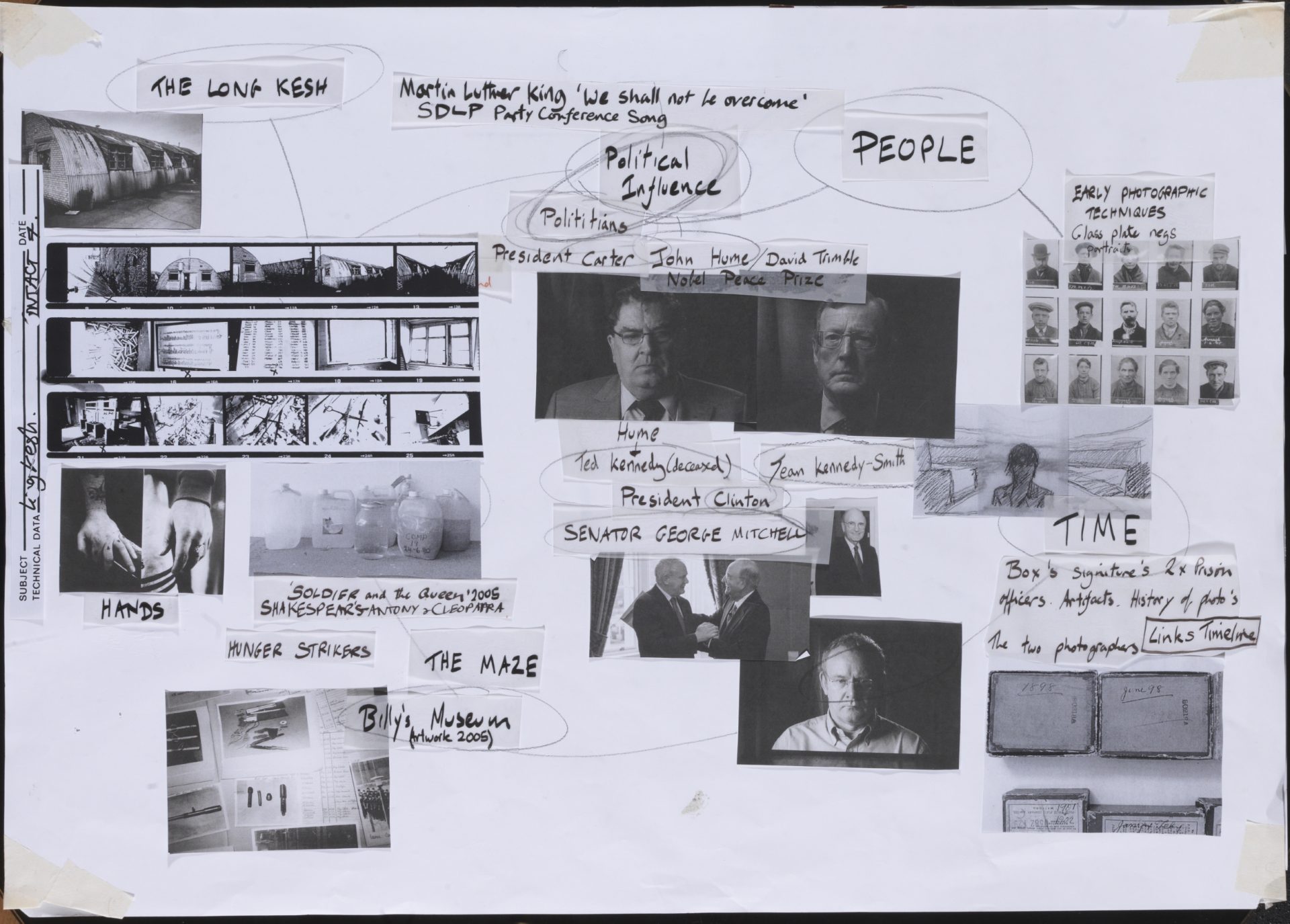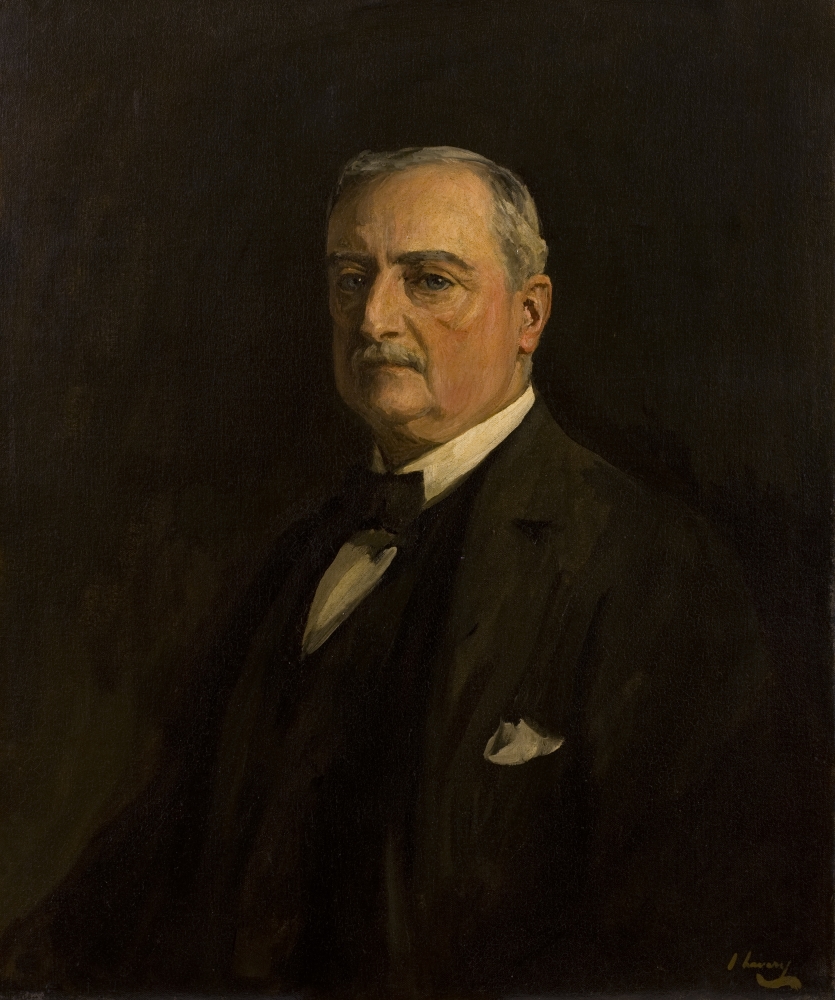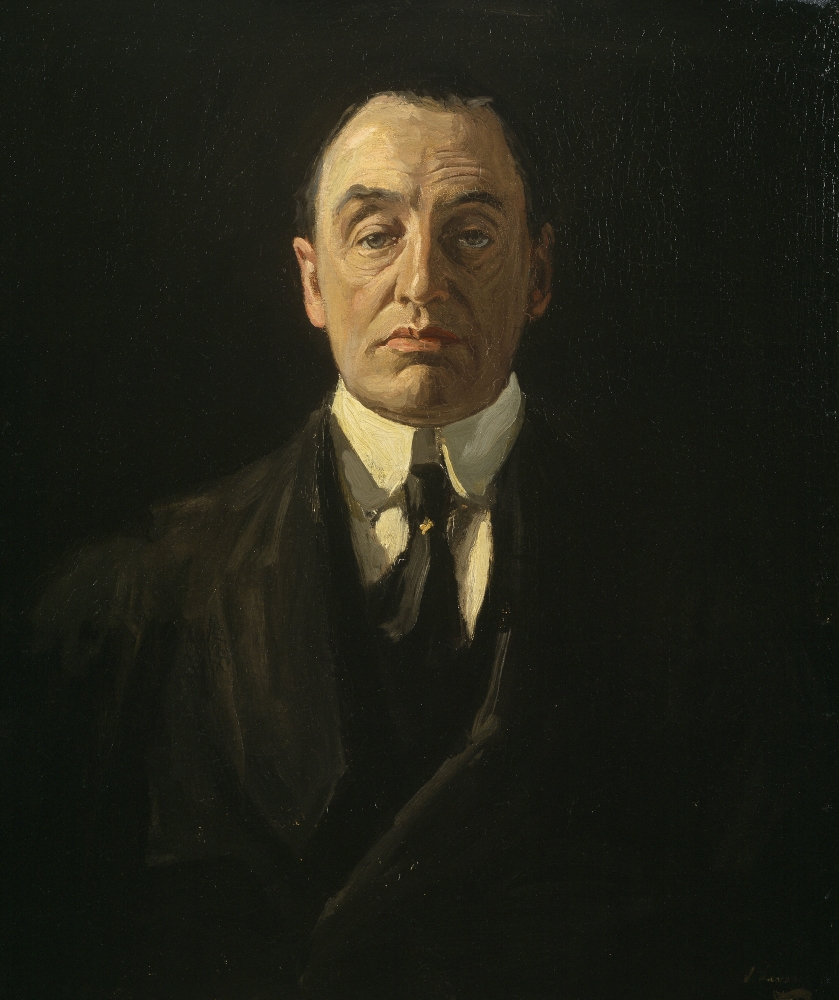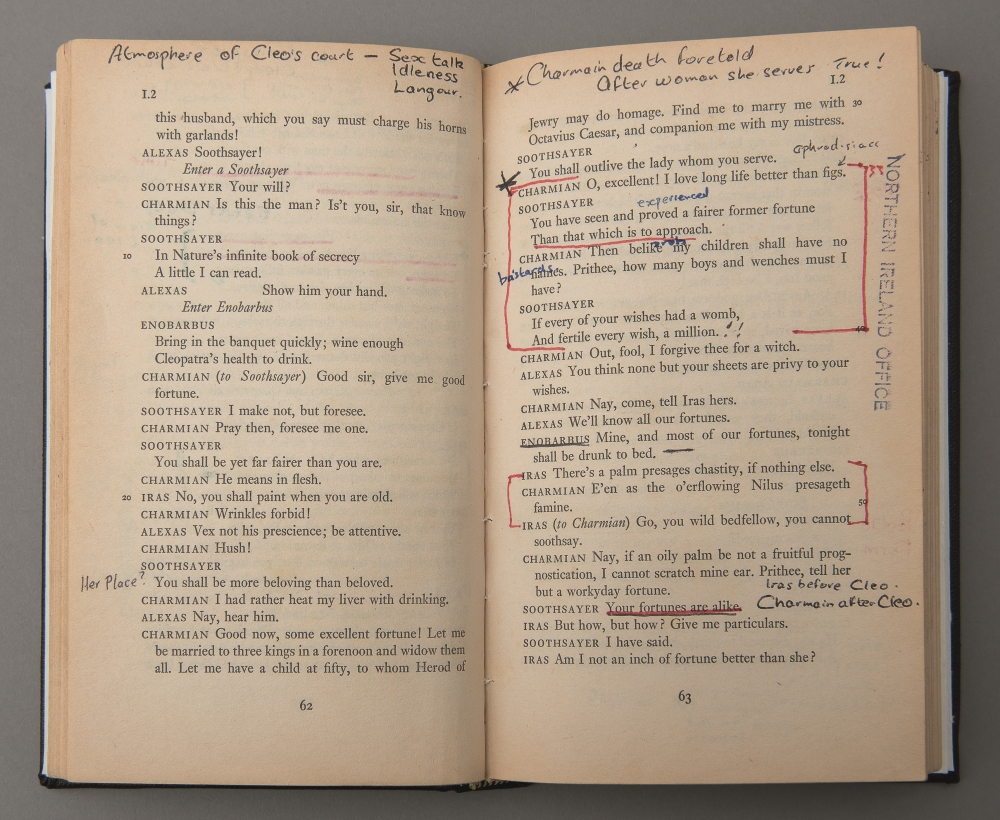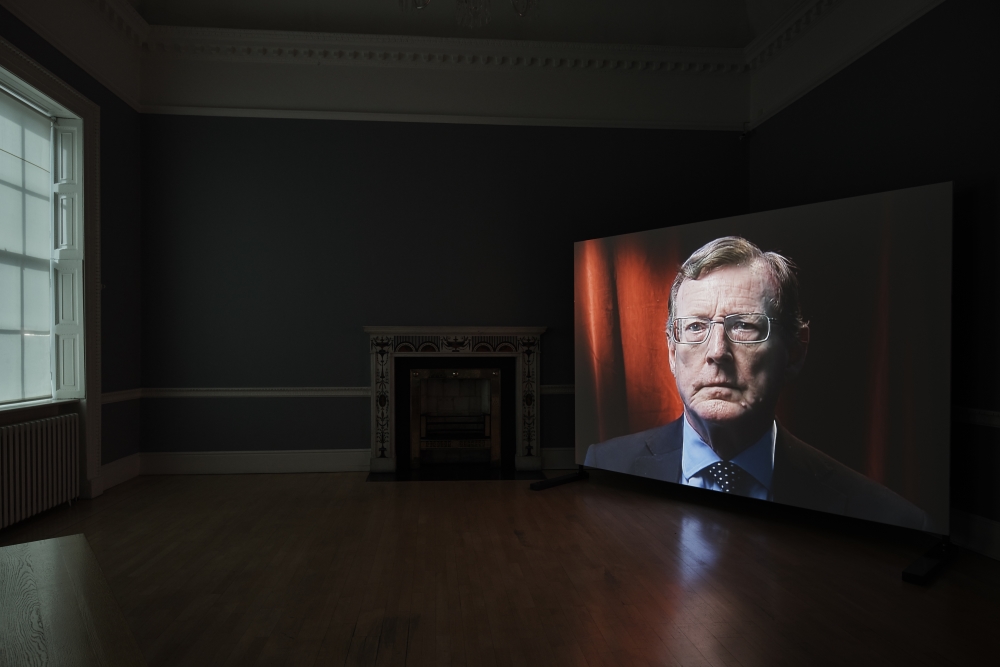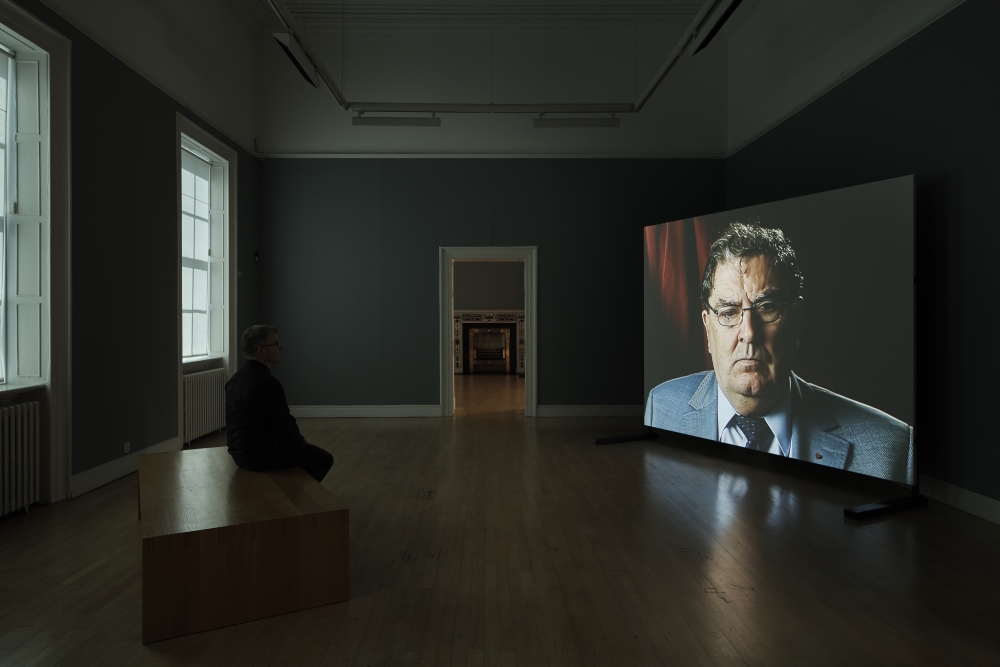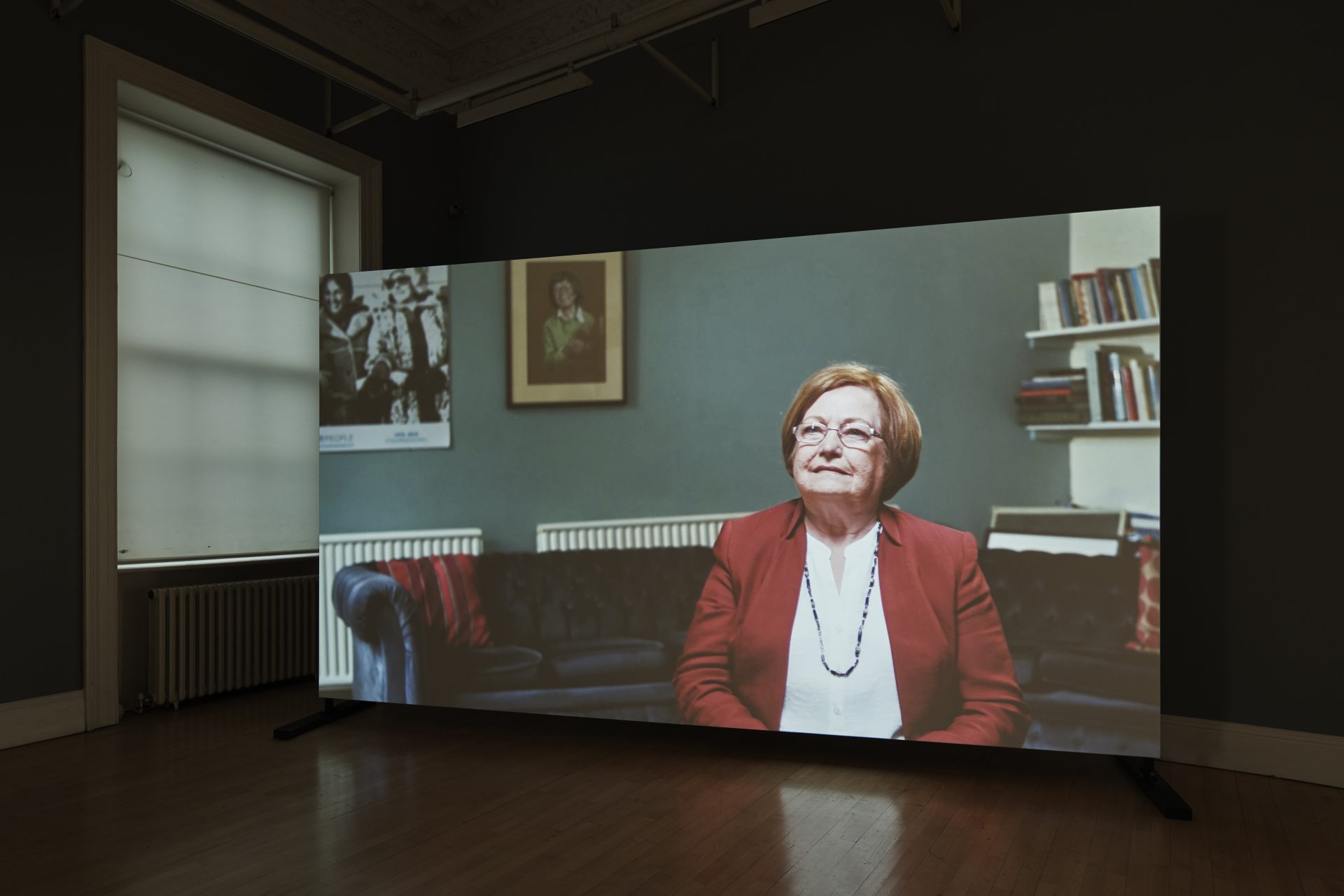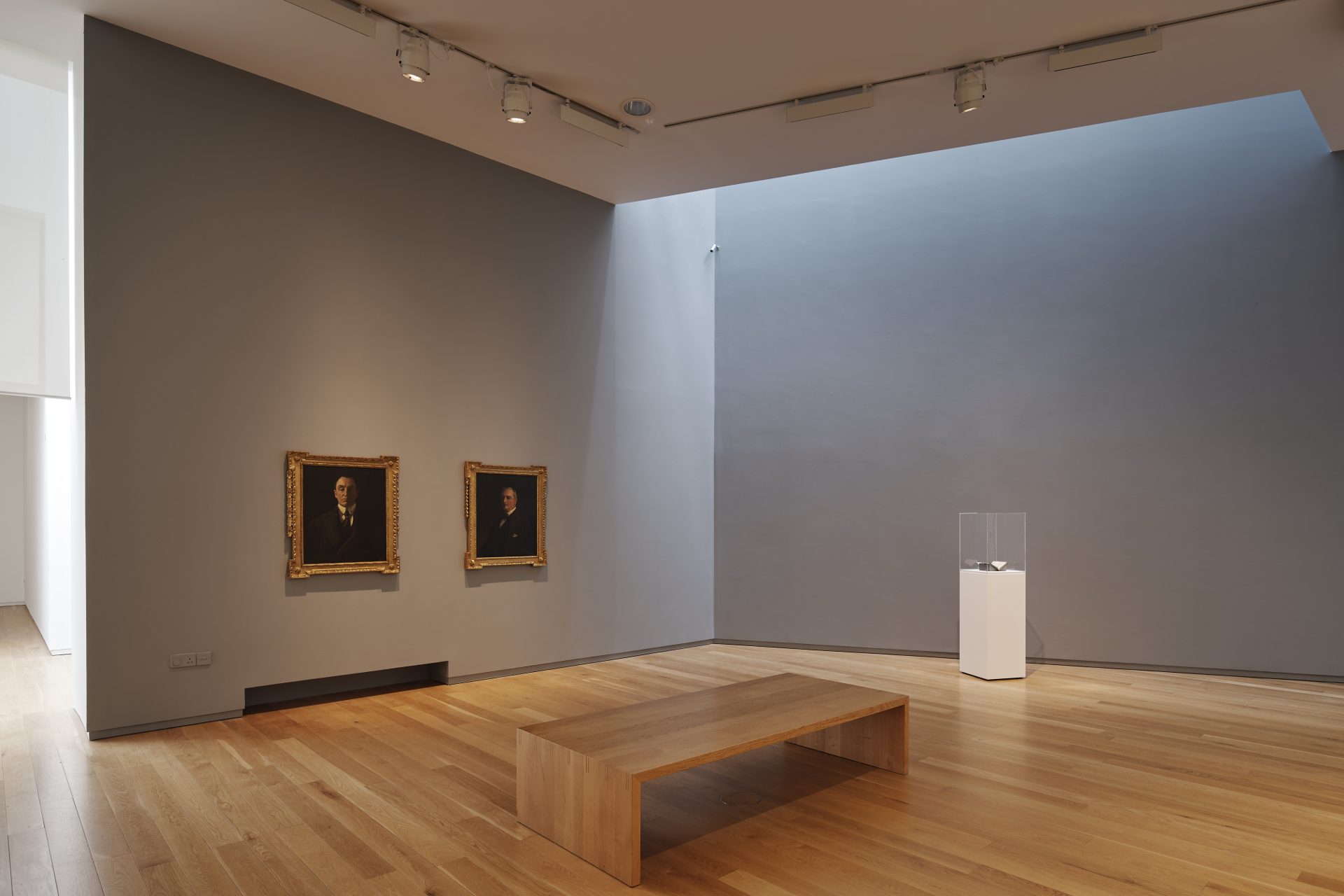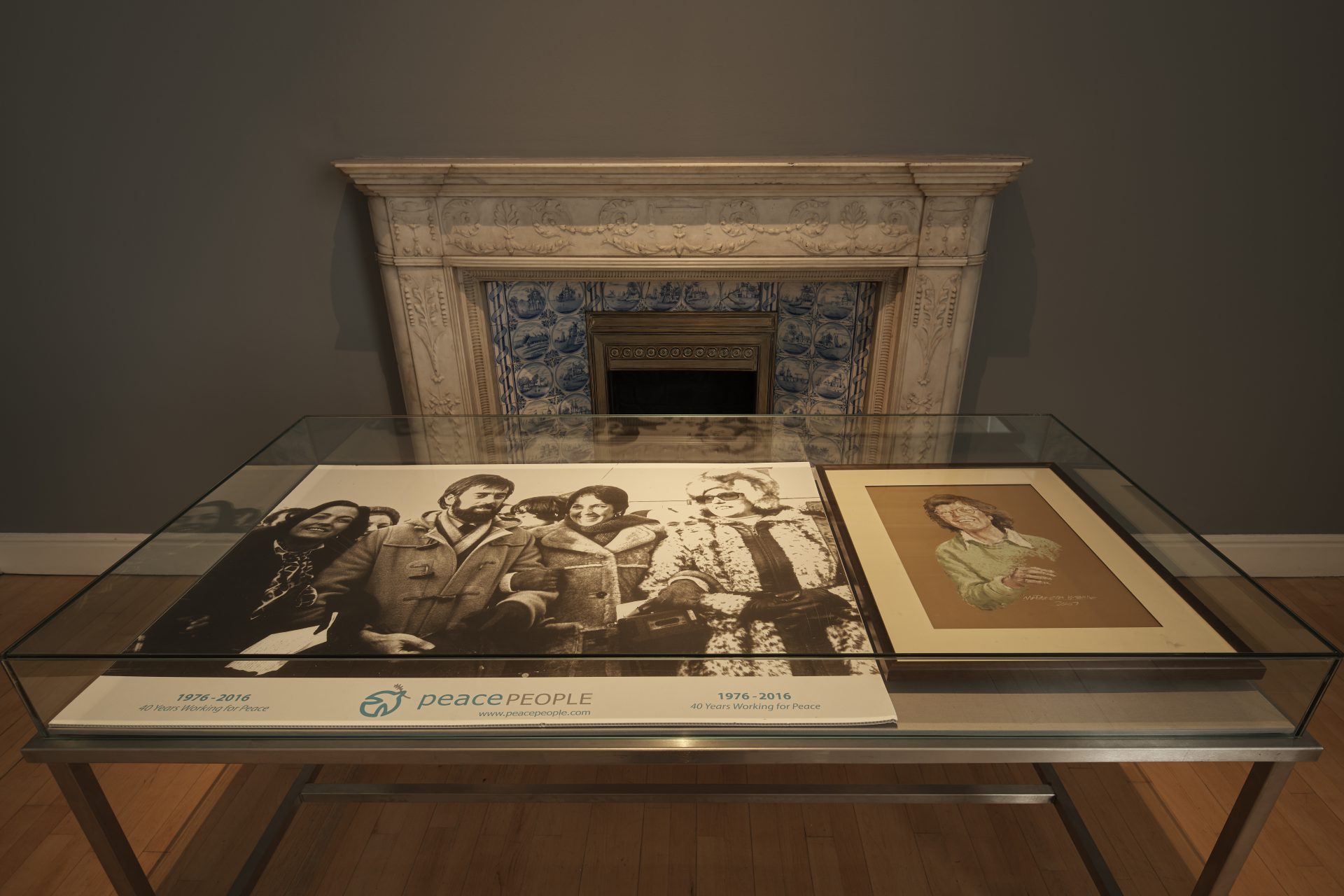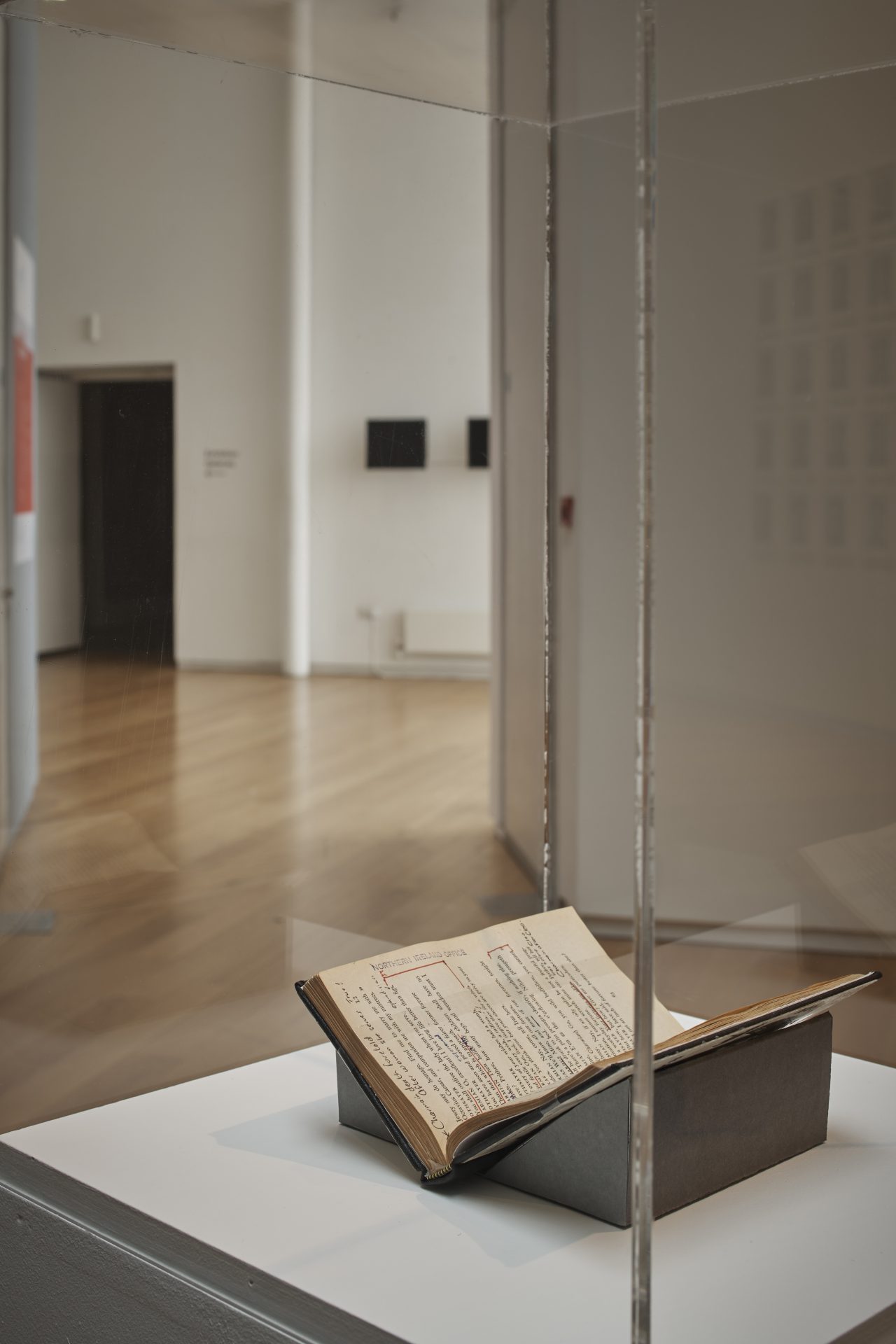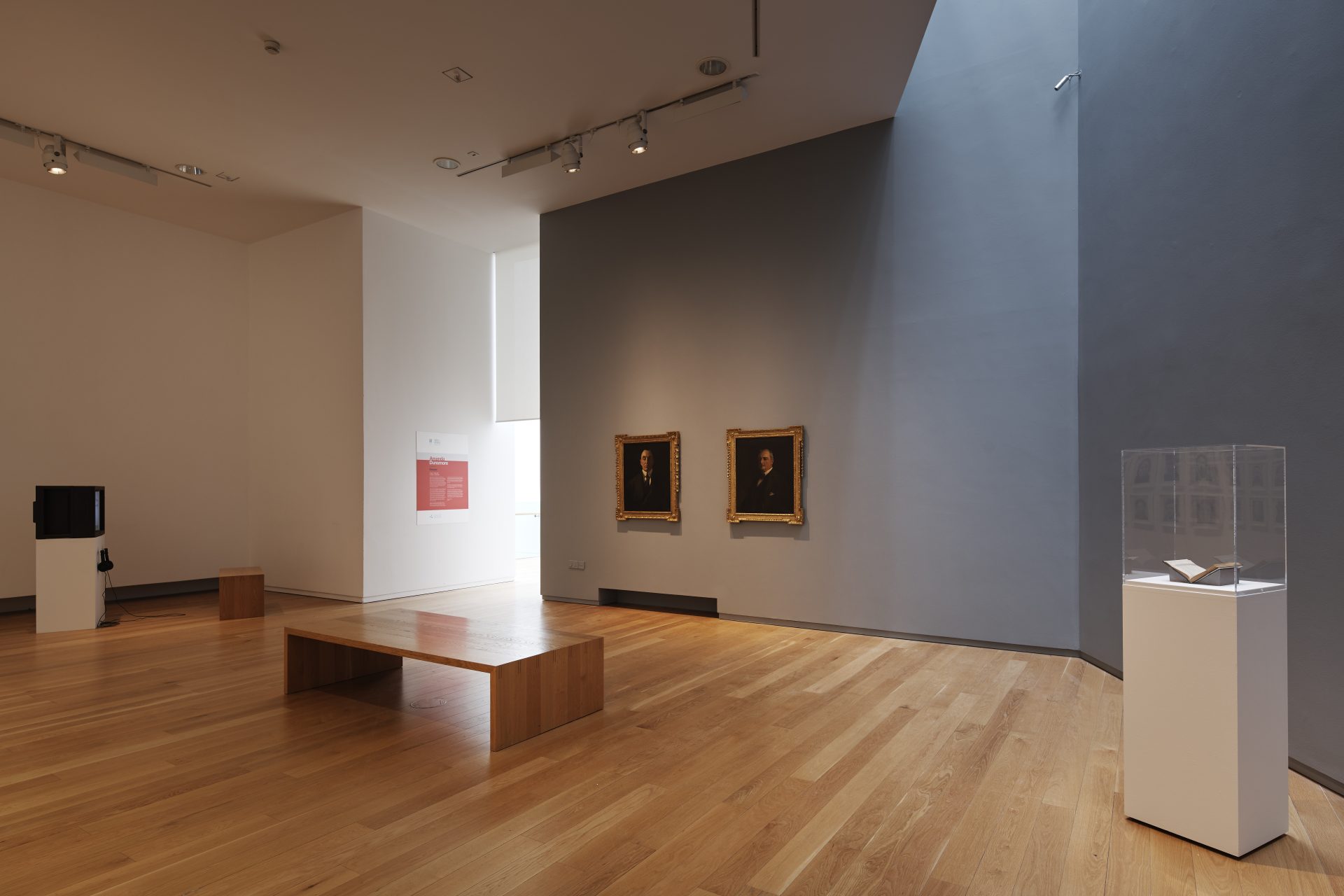Marking the 20-year anniversary of the Belfast/Good Friday Agreement—a major milestone in the evolution of peace in Northern Ireland—Keeper presents artist Amanda Dunsmore’s social and political portraits that reflect specific points in history from the late nineteenth century to the present day.
Keeper at Hugh Lane Gallery in 2018 to mark the 20th anniversary of the Belfast/Good Friday Agreement. Dunsmore’s contingent engagement with the conventions of commemorative portraiture included a monumental video on John Hume in the art historical tradition of portraiture.
Amanda Dunsmore employs art processes that explore representations of societal transformation through portraiture. She works with video, sound, photography and installation. Through sculptural methodologies and media, the mechanisms behind her practice have developed over the past twenty-five years. This results in contextual portraits involving longitudinal research processes. Her artwork is often presented as a series of extensive socio-political / historical art projects. Central to Amanda’s art practice is an exploration of potential future memory, the legacy of visual parity in portraiture and the long-term implications of socio-political art making.
‘Keeper’ is the title of an ongoing project by Amanda Dunsmore which was first initiated when she was appointed artist in residence in HM Prison Maze in 1998. It became an archive comprising artworks and gathered material relating to the lived experience of Northern Ireland, created through film and video, found objects, audio recordings and photography. A visual, independent record of the extraordinary events and people that led to the Belfast / Good Friday Agreement and peace in Northern Ireland. When we first spoke to Amanda about organising the exhibition, a year later the United Kingdom voted to leave the European Union, and the discussions of a hard border surfaced once again.
‘Billy’s Museum’ (2004) was the starting point for the ‘Keeper’ series. Long-term Prison Officer at HM Maze prison, Billy Hull, collected the confiscated materials from searches that were due to be destroyed over a period of 15 years during the height of conflict. He curated an exhibition of the artifacts in an old laundry room in the prison, and invited Amanda to film the exhibition, she interviewed him on his findings and experiences. The exhibition also included silent, 20-minute video portraits of key political figures involved in the Belfast/Good Friday Agreement, providing unique new perspectives on familiar, high-profile figures. These include John Hume (2005) and David Trimble (2017), who were jointly awarded The Nobel Peace Prize in 1998 “for their efforts to find a peaceful solution to the conflict in Northern Ireland”, this was the first time their portraits were exhibited at the Hugh Lane Gallery. Hume and Trimble were not the first recipients from the North to receive the Nobel Prize. In 1977, two women, Mairead Conigan Maguire and Betty Williams, were jointly awarded the 1976 Nobel Peace Prize. They were leaders of the Peace People; the movement co-founded by themselves and journalist Ciaran McKeown, a cross-community grassroots movement dedicated to ending the sectarian conflict in Northern Ireland.
Also on display was ‘The People’s Portraits 1899–1918’ (2018), acquired for the Hugh Lane Gallery Collection, is 100 printed portraits taken from late 19th and early 20th century glass plate negative prison photographs of prisoners dating from before Ireland’s partition, humanised through Amanda’s interventions. The video archive work ‘The Soldier and The Queen’ (2005) was based on a heavily annotated copy of Shakespeare’s ‘Antony and Cleopatra’ found abandoned in the education hut in the prison. Amanda also selected two portraits from the Hugh Lane Gallery Collection by Sir John Lavery: John Redmond and Sir Edward Carson, opposing Nationalist and Unionist politicians in the early 20th century – historical antecedents to today’s political landscape.
John Hume passed away on 3 August 2020, we take this week’s look back into our exhibition archive to also remember the revered peace-maker and his legacy as the father of the current Northern Ireland peace process. ‘Keeper’ is about people. The portraits of the Peace People and the portraits of the key political figures involved in the Belfast/Good Friday Agreement embody the people they represented. Their portraits are a formal visual fragment and representation of their remarkable legacies. Retained in ‘Keeper’ is a potential future memory. 1
For more information please visit: https://www.hughlane.ie/past/1956-amanda-dunsmore-keeper and http://www.amandadunsmore.com/
1. https://www.businesspost.ie/more-politics/the-many-faces-of-history-5c6e69d9 visited 10 August 2020
-
Profile
Amanda Dunsmore has exhibited widely in Ireland and internationally and her artworks can be found in private and public collections. Amanda is a lecturer and programme leader in Sculpture & Combined Media at Limerick School of Art & Design, LIT.A publication accompanied the exhibition and featured essays by Senator George Mitchell, Amanda Dunsmore, Fionna Barber and Cillian McGrattan.





